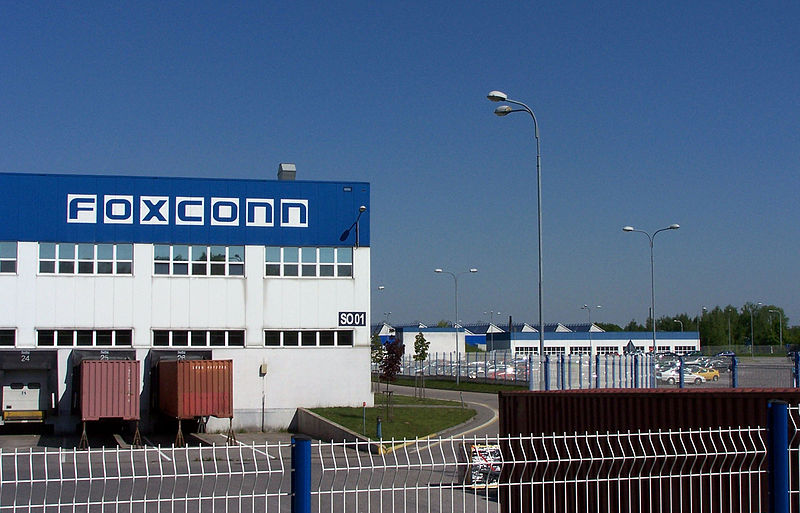
Proponents like President Trump say it will create jobs, but skepticism abounds.
President Trump visited southeastern Wisconsin on Thursday, where he attended the groundbreaking ceremony for a new factory that is expected to employ tens of thousands of workers to create display screens for computers, televisions and other electronics.
The massive facility will be owned and operated by Foxconn Technology Group, the Taiwan-based company famous for operating factories in China that build Apple products (factories that have been criticized for unsafe working conditions). But Trump and others say today represents a new chapter, as Foxconn will now be bringing electronics manufacturing back to U.S. shores and boosting the economy in the process.
There’s certainly potential for the Foxconn factory. Along with the predicted 13,000 jobs (which are expected to pay about $53,000 a year), the plant is likely to create tens of thousands of additional jobs to support the facility — manufacturing is a big job multiplier, after all.
Wisconsin officials behind the deal also are touting its potential economic benefits. Republican Gov. Scott Walker tweeted on Thursday that the new facility will “add $51 billion to the Wisconsin economy over the next 15 years. That’s an $18 return for every $1 worth of tax incentives.”
Foxconn is also an opportunity to bring back an electronics manufacturing base that has essentially disappeared from U.S. shores. The United States no longer makes mobile phones, televisions or computers — but a facility that will be manufacturing the high-tech display screens for those devices is a good start toward rebuilding America’s electronics supply chain.
But there are downsides.
Critics of the deal say that the state simply gave way too much up to land the new plant. Wisconsin awarded Foxconn $3 billion in incentives, while the local municipalities where the factory will be built gave $764 million of their own. The state also added $134 million to approve the infrastructure in the area to support the new facility.
And there are fears that Wisconsin might not see a return on its investment until 2043.
There also has been criticism that the new factory will create an array of environmental issues, especially given that Foxconn was not required to file an environmental impact statement and appears to be dodging other environmental regulations.
On the jobs front — by far the biggest selling point for the plant — Foxconn’s history of not making good on its job-creating promises is a concern. Foxconn has announced plans to build facilities everywhere from Pennsylvania to India, but ultimately didn’t follow through.
As our own Scott Paul told Huffington Post after the initial deal was made public in 2017: “I’ll be excited about this Foxconn announcement when I see actual paychecks going to workers in Wisconsin.”
But given that the president showed up for the groundbreaking on Thursday, perhaps Foxconn will make good on its promises this time. If that’s the case, it’s especially important to get the policy right — investing in training programs (and outreach to underserved communities) will be critical to ensuring that average Americans will indeed benefit from Wisconsin’s big investment.
Our takeaway? Ultimately, time will tell whether this whole Foxconn thing works out or ends up being a boondoggle.
But hey, let's look on the bright side. Our Scott Paul told CNBC on Thursday that the very fact that we are even having this discussion signals good things ahead for domestic manufacturing.
“Consider this. If you would have asked anyone five or 10 years ago whether you would see a large-scale plant ever built again in the United States for anything, that would employ 5,000 people or 10,000 people, people probably would have laughed you out of the room,” Paul said. “So the fact that this is happening, that Elon Musk is building this enormous battery factory in Nevada, shows me that there is a future for manufacturing in the United States.”
